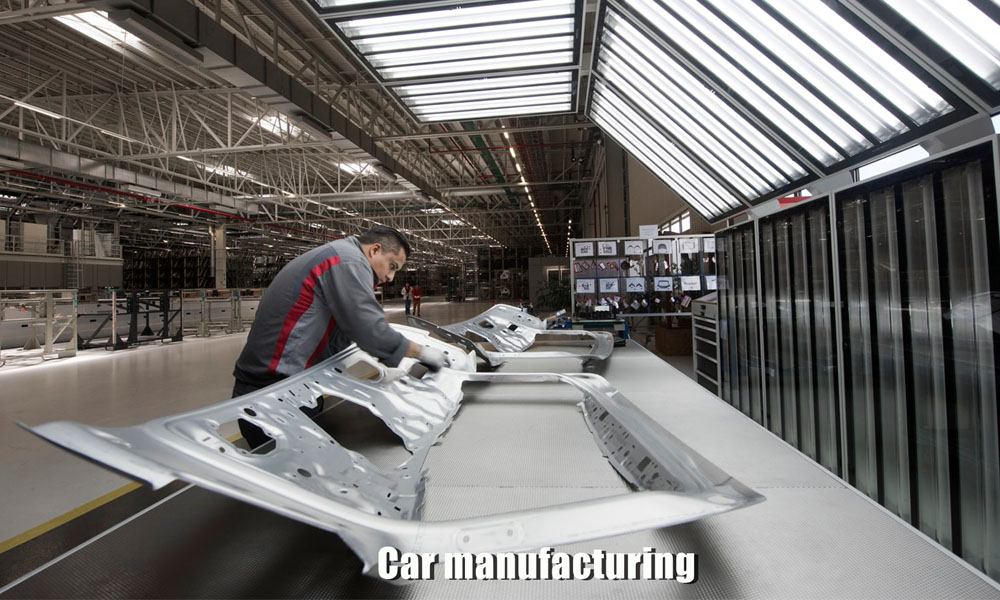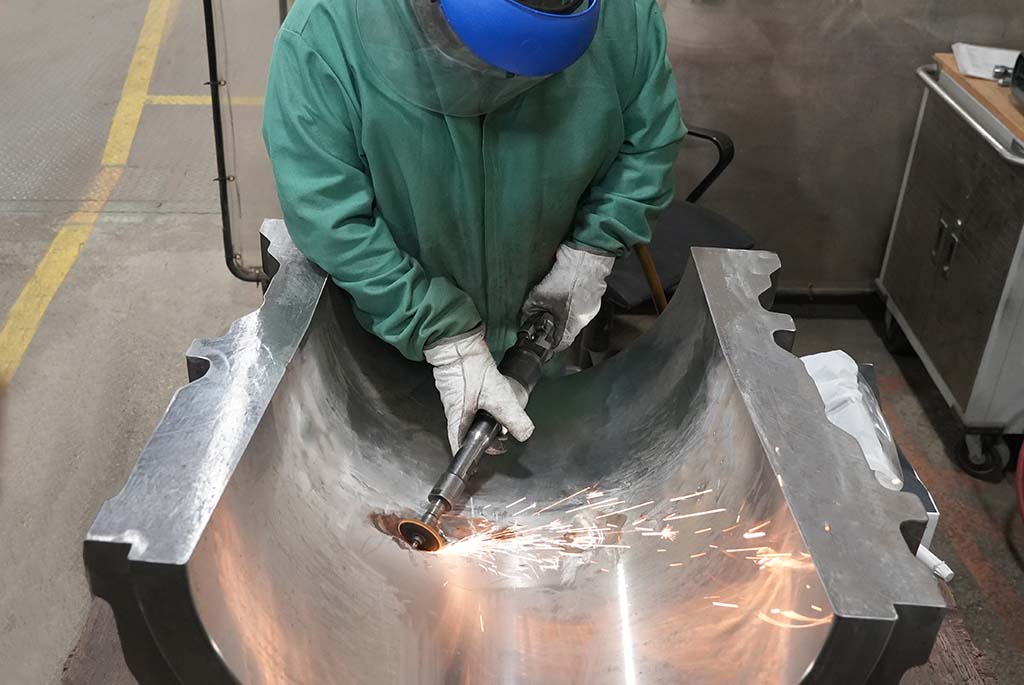Usual Welding Repair Issues and How to Address Them Successfully
Welding fixings commonly experience an array of issues that can threaten the honesty of the end product. Usual problems consist of poor infiltration, porosity, and misalignment, amongst others. Each problem presents one-of-a-kind obstacles that require details strategies for resolution. Comprehending these concerns is important for welders aiming to enhance their end results and skills. This discussion will discover these typical welding repair issues and efficient methods to resolve them.
Insufficient Penetration
Poor infiltration happens when the weld metal fails to completely fuse with the base product, resulting in weak joints and potential structural failings. This problem typically stems from inadequate warmth input, wrong electrode angle, or incorrect welding speed. Welders might run into inadequate penetration due to a mistake of the essential parameters for a certain product thickness or type. Additionally, contamination on the base material's surface area can prevent efficient bonding, worsening the problem. To resolve inadequate penetration, welders need to guarantee appropriate setups on their equipment and preserve a clean work surface. Normal examination of welds is suggested to identify any deficiencies early, enabling prompt adjustments and the avoidance of endangered architectural honesty in bonded settings up.
Porosity
Porosity is an usual problem in bonded joints that shows up as little gas bubbles entraped within the weld steel. This problem can jeopardize the integrity of the weld, causing minimized strength and possible failing under anxiety. Welding. Porosity generally emerges from contamination, wetness, or incorrect welding techniques, which enable gases to get away into the molten weld pool. To attend to porosity, welders must assure correct surface preparation, keep a tidy workplace, and utilize appropriate welding specifications. In addition, selecting the right filler material and protecting gas can reduce gas entrapment. Normal assessment and testing of welds can assist recognize porosity early, ensuring timely restorative activities are taken, thus protecting the top quality and dependability of the welded framework
Imbalance
Misalignment in welding can arise from various aspects, consisting of incorrect configuration and thermal expansion. Recognizing the origin is vital for reliable resolution. Several modification techniques are offered to straighten elements and assure structural integrity.
Causes of Imbalance
Welding misalignment typically originates from a variety of underlying issues that can endanger structural integrity. One primary cause is inappropriate fit-up of components prior to welding, which can cause spaces and unequal surfaces. Variants in thermal development throughout the welding process can also cause distortion, particularly if the materials being signed up with have different coefficients of growth. Additionally, insufficient fixturing and clamping may stop working to hold parts safely in position, causing activity throughout welding. Badly maintained devices, including welding makers and tools, may introduce variances in the weld grain, additional adding to imbalance. Driver mistake, stemming from insufficient training or experience, can also play a considerable role in producing misaligned welds.

Modification Methods Readily Available
Resolving misalignment efficiently requires a combination of corrective methods tailored to the specific concerns handy. One usual method is using jigs or fixtures to hold components in the right placement throughout welding, making certain consistent alignment. Furthermore, pre-heating the materials can help in reducing distortion and enhance fit-up. For substantial imbalance, mechanical realignment methods, such as using hydraulic jacks or clamps, can be employed to correct the setting before welding. Post-weld warm treatment might also be required to eliminate stress and anxieties triggered by misalignment. Ultimately, cautious examination and modification during the configuration stage can prevent misalignment issues from becoming considerable problems, advertising a smoother welding procedure and boosting general structural integrity.
Distortion
Distortion is a typical obstacle in welding that can emerge from different aspects, including irregular cooling and heating. Recognizing the causes of distortion is necessary for carrying out reliable prevention techniques. Addressing this issue not just improves architectural integrity yet additionally enhances the overall quality of the weld.
Root causes of Distortion
When subjected to the intense heat of welding, materials commonly undergo modifications that can cause distortion. This sensation mainly arises from thermal expansion and tightening throughout the welding procedure. As the weld area warms up, the product broadens; upon cooling, it contracts, which can create interior stresses. Additionally, uneven heating throughout a work surface can aggravate these stress and anxieties, resulting in warping or bending. The kind of material additionally plays a substantial role; steels with differing thermal conductivity and coefficients of development might respond in a different way, bring about uncertain distortions. In addition, inadequate joint design and insufficient fixturing can add to misalignment during welding, enhancing the probability of distortion. Recognizing these causes is necessary for effective welding repair work and prevention approaches.
Prevention Techniques
Effective avoidance strategies for distortion throughout welding emphasis on regulating warmth input and making sure appropriate joint style. Keeping a consistent warmth input assists to reduce thermal development and tightening, which can lead to distortion. Utilizing strategies such as pre-heating the workpiece can additionally minimize the temperature gradient, promoting uniform heating. In addition, picking proper joint styles, such as T-joints or lap joints, can improve security and reduce anxiety focus. Carrying out proper fixturing to protect the workpieces in location even more aids in keeping placement throughout the welding procedure. Ultimately, staggered welding sequences can disperse warm extra uniformly, avoiding local distortion. By applying like it these methods, welders can significantly decrease the possibility of distortion and enhance the overall top quality of their welds.
Splitting
Breaking is an usual problem experienced in welding fixings, commonly resulting from different aspects such as inappropriate cooling prices, material option, or insufficient joint prep work. The incident of cracks can greatly compromise the honesty of the weld, resulting in possible failures during procedure. To address this problem, welders have to initially examine the origin, making certain that materials work and properly chosen for the details application. In addition, managing the air conditioning rate during the welding process is vital; quick review cooling can induce stress and cause breaking. Proper joint style and prep work additionally add to minimizing the threat. Executing these strategies can enhance weld high quality and longevity, eventually decreasing the possibility of fracturing in finished weldments.

Insufficient Combination
A substantial issue in welding repair work is incomplete blend, which occurs when the weld metal does not sufficiently bond with the base material or previous weld passes - Montana Mobile Welding and Repair. This problem can bring about weaknesses in the joint, potentially jeopardizing the integrity of the welded framework. Variables adding to incomplete blend include not enough warmth input, incorrect welding method, and contamination of the surface areas being signed up with. To address this issue successfully, welders should guarantee correct pre-weld cleansing and surface area preparation, in addition to change their welding criteria to accomplish appropriate infiltration and combination. Normal inspection during the welding process can likewise aid recognize insufficient blend early, enabling prompt restorative steps to improve the overall quality of the weld
Overheating
While welding repair work can enhance structural integrity, overheating presents a substantial obstacle that can cause product destruction. Excessive warmth during welding can change the mechanical residential properties of metals, leading to decreased strength, enhanced brittleness, and warping. This sensation is particularly important in high-stress applications where structural dependability is critical. Recognizing overheating can include aesthetic evaluations for discoloration or distortion, in addition to keeping track of temperature level during the welding process. To minimize the dangers related to getting too hot, welders need to employ proper techniques, such as controlling warm input, changing traveling speed, and using ideal filler products. Additionally, implementing pre- and post-weld useful source warm therapies can aid recover material properties and boost the overall top quality of the repair, ensuring long-lasting efficiency and security.
Frequently Asked Questions
What Are the Usual Indicators of a Welding Flaw?

Just How Can I Examine My Welds for High quality?
To check welds for top quality, one can make use of visual assessments, ultrasonic screening, and radiographic approaches. Each strategy guarantees architectural stability, determines issues, and verifies adherence to defined requirements, ultimately improving the integrity of the bonded joints.
What Safety Safety Measures Should I Take While Welding?
When welding, one should prioritize security by using suitable individual safety equipment, making sure appropriate air flow, securing combustible materials away, preserving a tidy work area, and knowing surroundings to prevent accidents and injuries.
Can I Repair a Weld Without Redesigning the Entire Joint?
Repairing a weld without renovating the entire joint is feasible, relying on the damages (Belgrade). Strategies such as grinding, including filler product, or making use of a welding process can efficiently resolve particular problems while protecting the surrounding structure
What Tools Are Vital for Reliable Welding Repairs?
Necessary devices for reliable welding repair work include a welding maker, wire brush, mill, protective gear, clamps, and filler products. Each tool plays an important duty in guaranteeing high quality and safety and security throughout the fixing procedure. Porosity usually arises from contamination, wetness, or improper welding methods, which permit gases to escape right into the molten weld swimming pool. Improperly maintained equipment, including welding machines and tools, might introduce disparities in the weld grain, additional adding to misalignment. When subjected to the intense warm of welding, products often go through modifications that can lead to distortion. Fracturing is an usual concern experienced in welding repairs, frequently resulting from different variables such as incorrect air conditioning prices, product selection, or insufficient joint preparation. A significant issue in welding repairs is incomplete combination, which happens when the weld metal does not appropriately bond with the base product or previous weld passes.